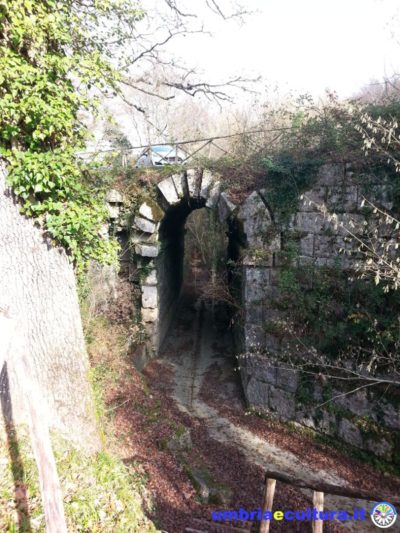Near Massa Martana, in San Faustino, along one of the two original sections of the Via Flaminia, stands the imposing Fonnaia bridge (Ponte Fonnaia), half hidden in the greenery.
The consular road Flaminia, which from Rome entered Umbria at the height of Otricoli, reached Narni from where it branched in two directions: one towards Terni and Spoleto and the other, the one where the bridge is located, which passed through Sangemini, Carsulae, Vicus Martis, to then rejoin near Foligno and reach Rimini. It was inaugurated in 220 BC. by Caio Flaminio, in order to create an artery that would allow an agile movement of the troops in case of unrest or riots in the controlled territories.
Along its way, to cross a natural obstacle represented by a tributary of the Naia river, the bridge was built, the appearance of which originally had to be very different from the current one, probably made of wood and of reduced dimensions.
Very well preserved, the aspect of the bridge that we can admire today dates back to an Augustan restoration. Obliquely oriented with respect to the watercourse, it amazes for its size, with its approximately 20 meters wide and 8 meters high. To understand its majesty just think that the Via Flaminia, in Umbria, conventionally has a width of 4 meters, the size necessary to allow two wagons to pass simultaneously in both directions.
The unreal charm of this testimony of the ancient time is certainly amplified by its location, very suggestive, by the care used in its construction, with blocks of slightly rusticated travertine, valuable details such as the frame that runs on both sides the base of the vault at all sixth, also extending to the external sides, and from its dimensions which seem, in our eyes, strangely imposing compared to the width of the watercourse to be overcome.
Curious is the presence, visible on some of the blocks used for its construction, of two codes: “P2” or “2”, probably useful to indicate the arrangement of the blocks themselves during construction or, perhaps, indicators of the quarry of origin of the material.
The vault of the Fonnaia bridge is totally preserved, even if it may not seem so, the oblique course of the stones is due to the particular arrangement, which has already been mentioned, of the bridge with respect to the watercourse. No boulder has fallen, there is only a large monolith that appears to hang in the balance, but thanks to the construction techniques of the Romans, on the bridge from almost 2000 years of life, it is still possible, even, to park cars.
Benedetta Tintillini
Find the Fonnaia bridge on Google Maps:



